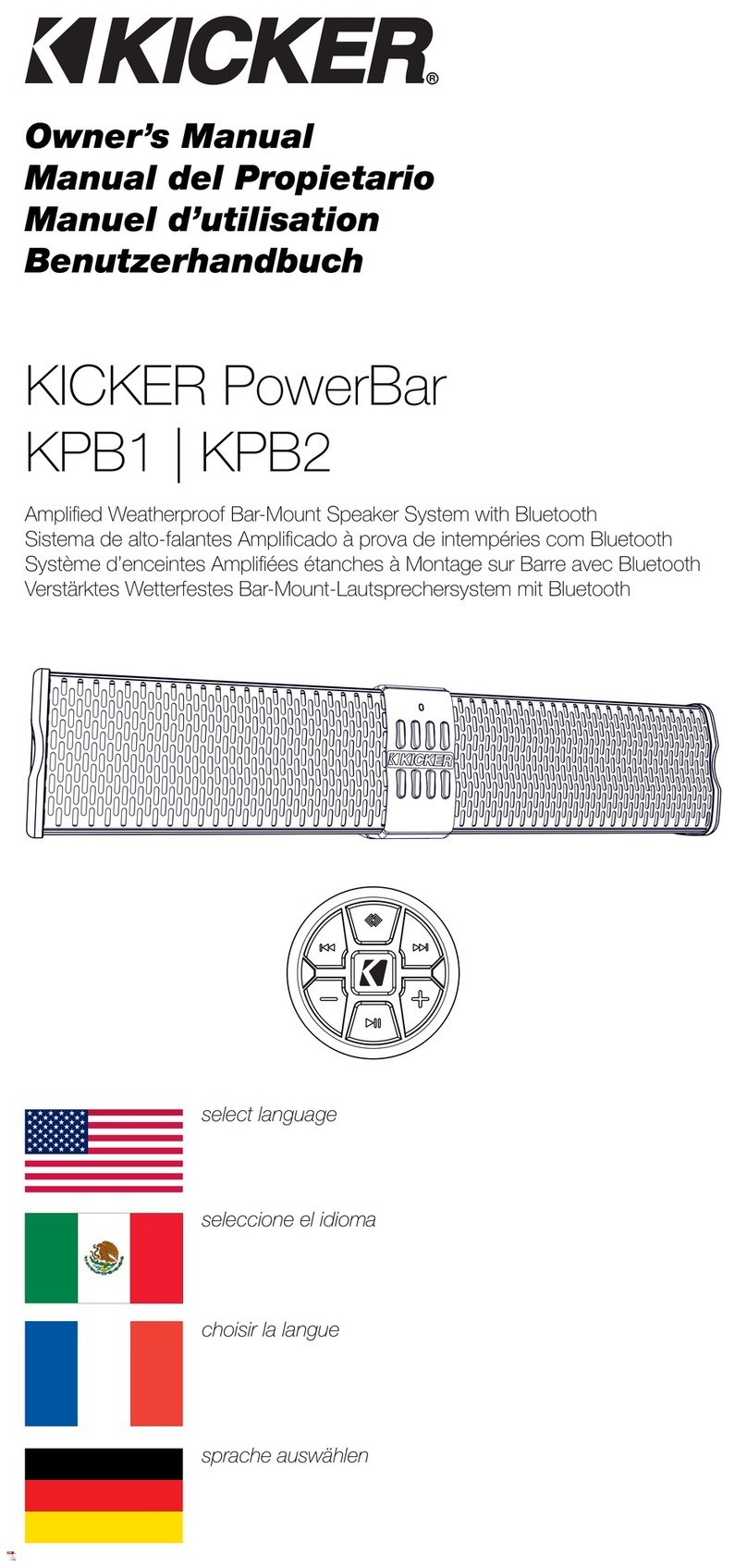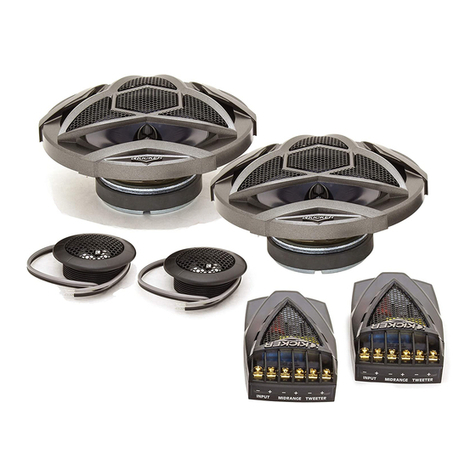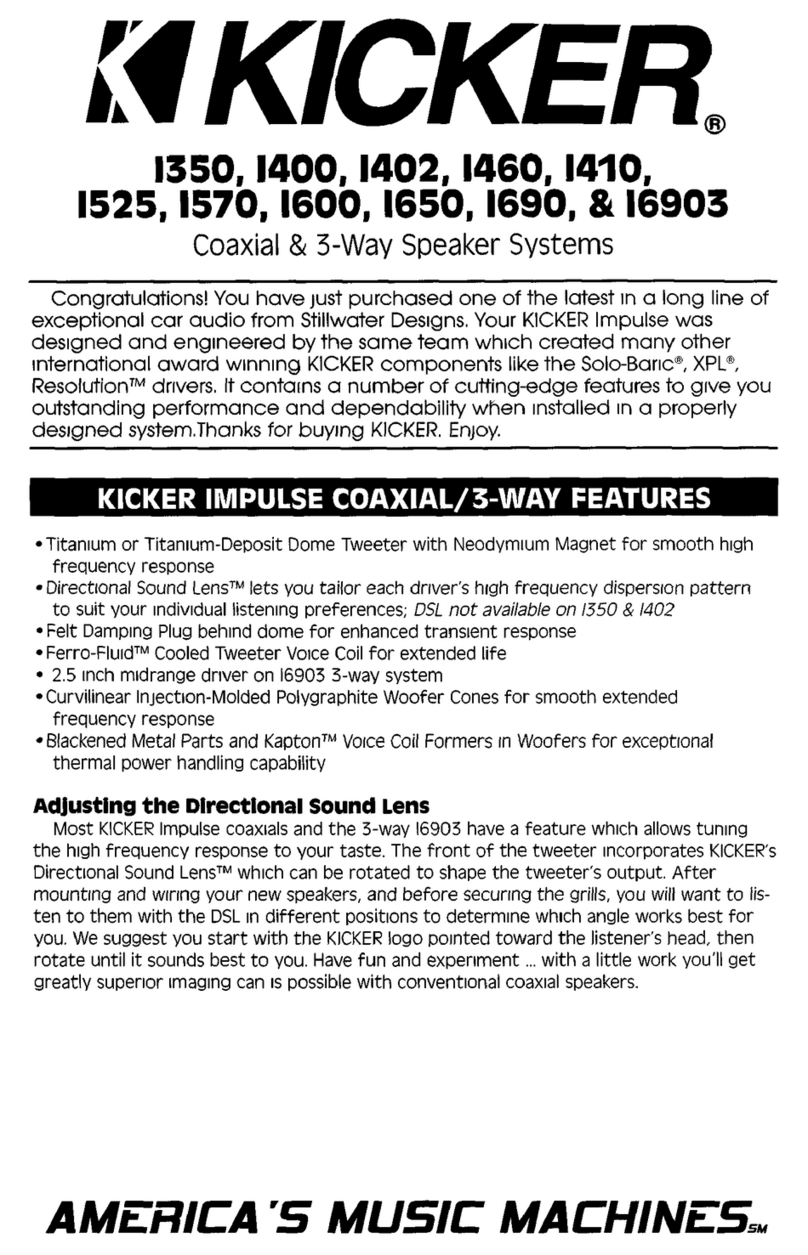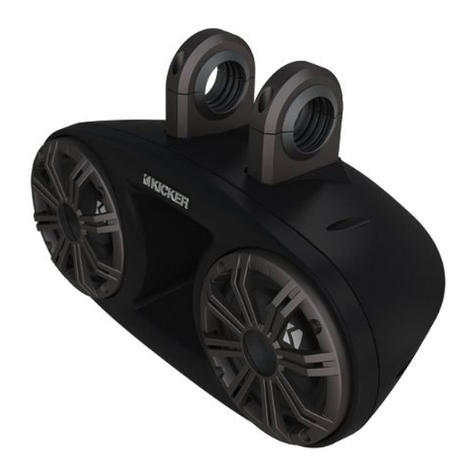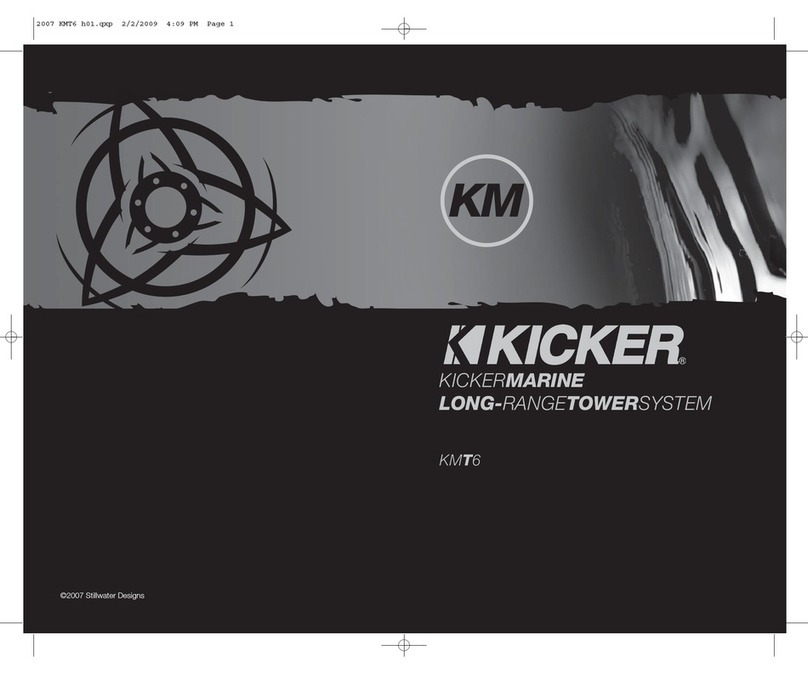2QSCOMPONENTSYSTEM
QSCOMPONENTSYSTEMOwner’sManual
QS COMPONENTS
The KICKER QS-series component systems offer unmatched audio fidelity for vehicle applications.
Whether you’re configuring the ultimate multi-speaker and subwoofer surround system or simply
upgrading from dull, lifeless factory speakers, the QS component systems deliver the most pleasing full-
range sound on the market today!
PERFORMANCE
Authorized KICKER Dealer:
Purchase Date:
Speaker Model Number:
Model: QS60.2 QS65.2
Woofer Size 6” (160mm) 6.5” (165mm)
Tweeter Size 1-3/16” (30mm) 1-3/16” (30mm)
Dome Material Tetoron®Tetoron®
Impedance, (DC Resistance) 4Ω, (3.5Ω)4Ω, (3.5Ω)
Power Handling Peak, (RMS) 180W, (90W) 200W, (100W)
Sensitivity @ 1W, 1m 86dB 87dB
Effective Frequency Range 50Hz–22kHz 40Hz–22kHz
Woofer Mounting Hole Diameter 5-1/16” (129mm) 5-7/16” (138mm)
Woofer Mounting Depth ≤2.5” (63.5mm) ≤2.5” (63.5mm)
Tweeter Hole Diameter 1-13/16” (46mm) 1-13/16” (46mm)
Flush-mount Tweeter Depth 1-1/8” (29mm) 1-1/8” (29mm)
Crossover High Pass Filter 24dB/octave @ 2.8kHz 24dB/octave @ 2.8kHz
Crossover Low Pass Filter 12dB/octave @ 2.8kHz 12dB/octave @ 2.8kHz
High Frequency Output Level 0dB, +3dB, +6dB 0dB, +3dB, +6dB
Pro Tip: Looking for the next step in audio performance from your QS components? Upgrade to a
KICKER IX or ZX 4-channel amplifier for each QS component system you have installed to take full
advantage of the QS’s bi-amping capabilities. With a dedicated amplifier channel for each tweeter and
each midrange driver, you’ll have a more efficient system that will deliver a clearer soundstage and
an increasingly dramatic dynamic response. In other words, your music will be more expansive and
captivating.
MODEL: QS65.2 / QS60.2
2009 QS Multilingual h01.indd 22009 QS Multilingual h01.indd 2 11/21/2008 10:54:27 AM11/21/2008 10:54:27 AM
